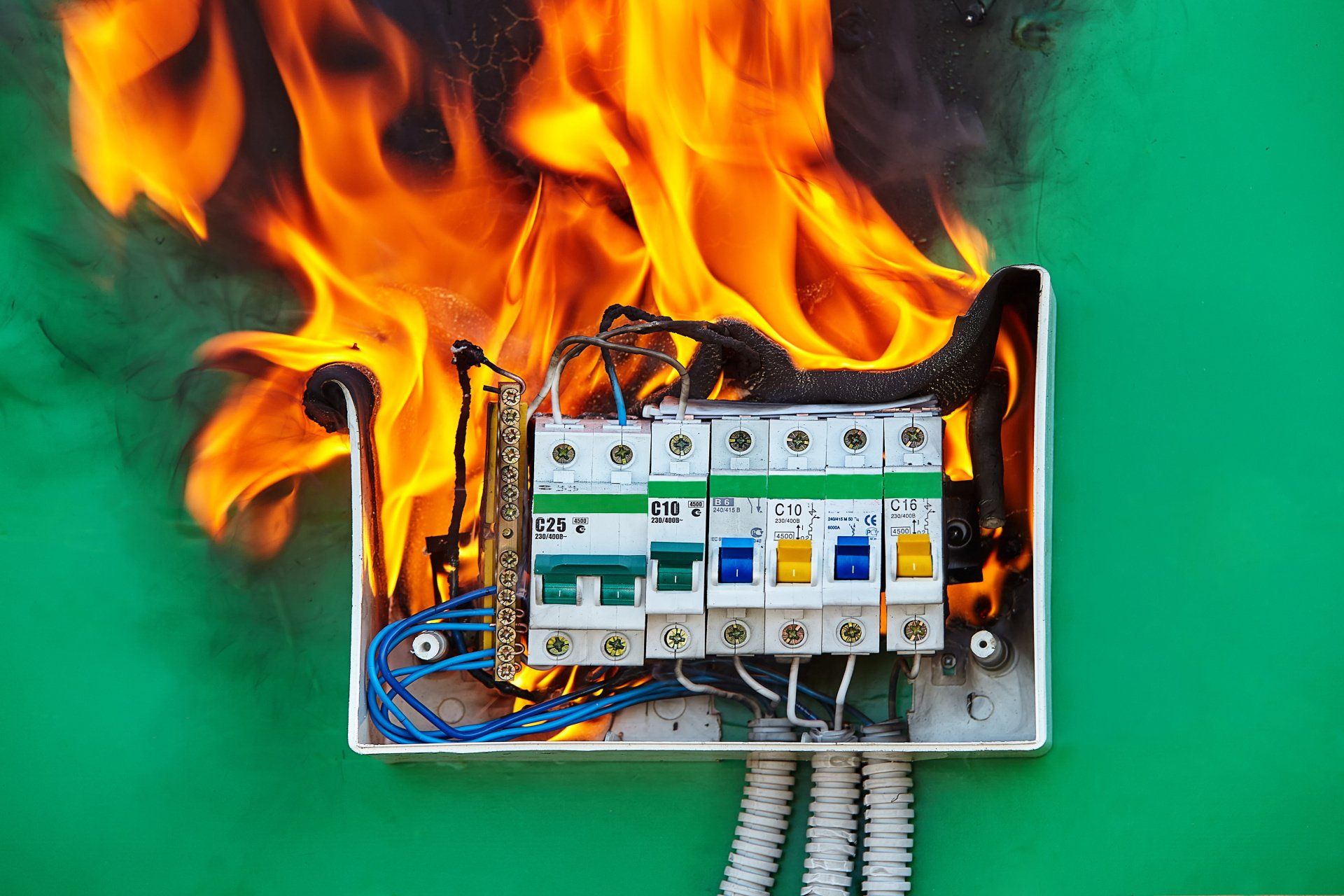Smoke Alarms Explained...
Evolve Electrical Services • 21 January 2021
The new season is a great reason to make and keep resolutions. Whether it’s eating well or cleaning out the garage, here are some tips for making and keeping resolutions.
There are three main types of smoke and heat alarms, which are designed for use in specific rooms in the house and to detect the types of smoke and fires that can commonly start in those rooms.
It is best practice to have a combination of all of the alarms.
Ionisation Smoke Alarms
Probably the most common smoke alarm and least expensive. Ionisation smoke alarms use a low radioactive element to create a small electrical current between two ion charged plates, smoke disrupts the flow of ions triggering the alarm. Designed to quickly react to fast flaming fires, ionisation smoke alarms are most sensitive to small particles in the air. When fires produce little or no smoke but the fuel is subject to rapid combustion, the ionisation smoke alarm is the quickest to sense its presence. Ideally positioned on an upstairs landing, stairwell or in a bedroom.
Optical Smoke Alarms
Also known as photo-electric smoke alarms and the second most common. They work by using infrared beams and photosensors to see smoke particles because they block the beam activating the alarm. Optical smoke alarms are much quicker at detecting slow smouldering fires and large particles in the air and better for avoiding false alarms from burning toast and cooking fumes. They are suitable to be positioned in a downstairs hallway adjacent to a kitchen but should not be installed in areas open to the elements or in dusty environments.
Heat Alarms
As the name suggests they respond to heat rather than smoke and are ideal for installation in kitchens. They work by using an internal thermostat to continuously monitor the temperature of the air in a room, when this temperature reaches 58°C the alarm will activate. Heat alarms are also suitable for use in a garage where dust or vehicle fumes may be present.
Carbon Monoxide Alarms (CO)
Not a smoke alarm but just as important for areas containing a fuel burning appliance, these alarms activate when they detect carbon dioxide in the air. There is not much chance of a false alarm as they use a chemical reaction to any amount of CO, so if an alarm is triggered it is highly likely that there is a leak. Carbon monoxide is an odourless and colourless gas which is produced by burning fuels. When inhaled, carbon monoxide can prevent the amount of oxygen in the blood being carried around the body. Symptoms of carbon monoxide poisoning can include headaches, dizziness and nausea. Often called the silent killer, prolonged exposure can even prove fatal.
Mains or Battery Powered?
Battery powered smoke alarms should always be installed as the very minimum. Lithium battery technology has seen many advances in recent years allowing some manufacturers to offer longer battery life, some up to 10 years. Other models also feature a wireless base unit which can link several alarms together. Installing interlinked alarms mean that, should a fire be detected downstairs, the alarm will also activate other linked alarms throughout the property affording the earliest warning and the best chance of planning an escape in the event of a fire. In new or refurbished properties Part ‘B’ of the building regulations state that mains operated, interlinked smoke alarms must be installed and should conform to BS 5839-6 grade D.
Mains powered smoke detectors and heat alarms should contain a back-up battery so that, in the event of a mains failure, the back-up battery ensures that the alarm will continue to power until the mains feed is restored.
What About the Disruption?
Many people request that their old battery powered alarms are upgraded to new mains powered versions but are concerned about any disruption caused by installing the new wiring. Whilst a new dedicated circuit would be the ideal scenario, it is not always feasible. In most cases we can still install the new alarms powered by the existing lighting circuits with wireless interlinked bases achieving a full system.
I Have a Rental Property?
Since October 2015 it has been a legal requirement to ensure your rental property has adequate smoke and carbon monoxide detectors installed. The regulations require private landlords to have:
• At least one smoke alarm installed on every storey of the rental property which is used as living accommodation.
• A carbon monoxide alarm installed in any room used as living accommodation where solid fuel is used.
• The landlord must ensure that the alarms are in good working order at the start of each new tenancy.
New Landlords often think that they are required to install mains powered alarms but this is not the case. The regulations do not stipulate the type of alarms to be installed but suggest that landlords make an informed decision and choose the best alarms for their properties and tenants.
A Final Note
Whilst having working smoke detectors will give you peace of mind for many years, it should be noted that regular testing, maintenance and battery replacement will ensure that they will operate effectively should the worst happen.
Many manufacturers recommend that their smoke and heat alarms should be replaced after ten years, as they can then start to become less reliable.
For further information or to arrange a quotation why not use our contact form.







